|
|

|
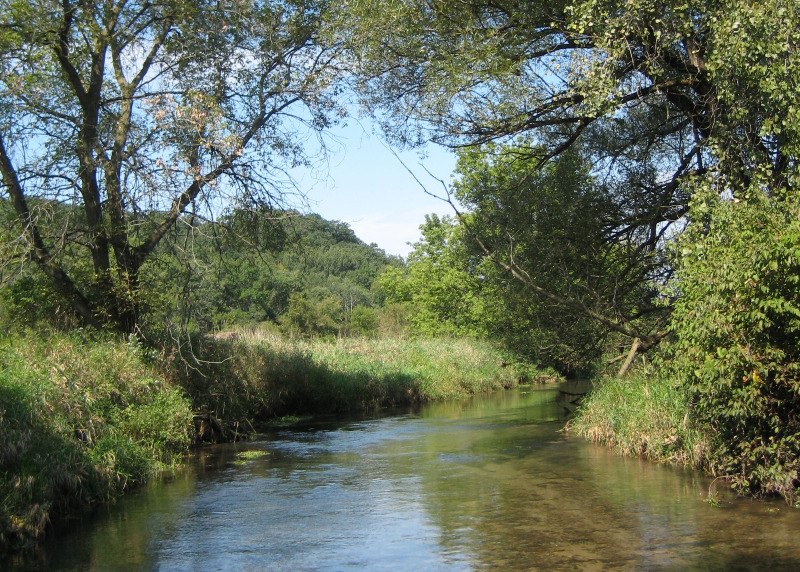
by Dulce Maria Vazquez, age 13
The Sugar River runs throughout southern Wisconsin and ultimately feeds into the Rock River in Illinois. The start of its main branch is located in Mount Horeb in Dane County, close to Madison, Fitchburg, and Verona.
One of the Sugar River’s biggest feeder streams is Badger Mill Creek. The creek also begins in Madison and runs through Verona and Fitchburg. It finally reaches, and merges with, the Sugar River near Highway 151.
The Sugar River’s other note-worthy tributaries are the West Branch of the Sugar River and Mount Vernon Creek, which help make up the Upper Sugar River Watershed. The Upper Sugar River Watershed encompasses the section of the Sugar River that lies upstream of Bellville, Wisconsin. The whole watershed reaches across about 500,000 acres, or 760 square miles, of southern Wisconsin and the northern part of Illinois.
[read more]
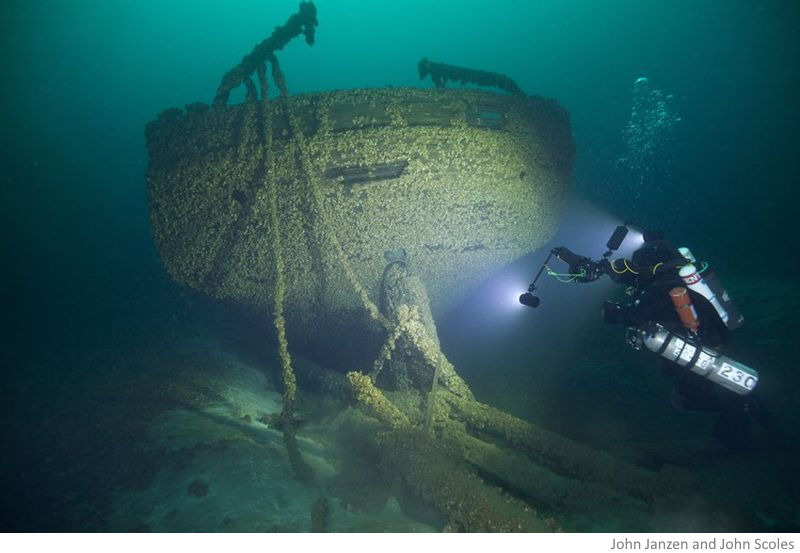
by Jeremiah Warren, age 11
Can you imagine diving in a lake and finding a shipwreck? It’s estimated that there are 6,000 shipwrecks in the bottom of the great lakes. Bernie Hellstrom, a diver, was one who found two ships – Peshtigo and St. Andrews – in the depths of Lake Michigan. Both of these ships collided more than 140 years ago.
It is believed that these ships sank in 1878 in the east of the Straits of Mackinac in Lake Huron, but only the Peshtigo ship was found in the accident. St. Andrews' ship was not found until recently.
The Peshtigo ship was 161 feet long, it was used to carry and transport coal to other areas. The St. Andrews' ship was 143 feet long and was used for carrying corn.
[read more]
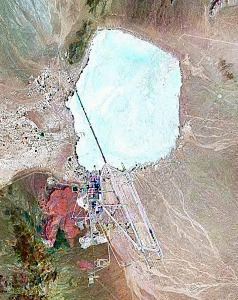
by Jessica Lopez, age 11
Do you believe that UFOs are real? Have you ever heard of people seeing UFOs near Area 51? Do you wonder what could exist at this location?
Area 51, located in southern Nevada, is one of the most secretive military training ranges for the U.S. Air Force. It is formally known as the Nevada Test and Training Range at Groom Lake.
The public did not find out about Area 51 until August 2013. This was years after Dr. Jeffrey T. Richelson, senior fellow at the George Washington University National Security Archive, submitted the Freedom of Information Act Request in 2005. This request made the CIA release information about the military base.
[read more]
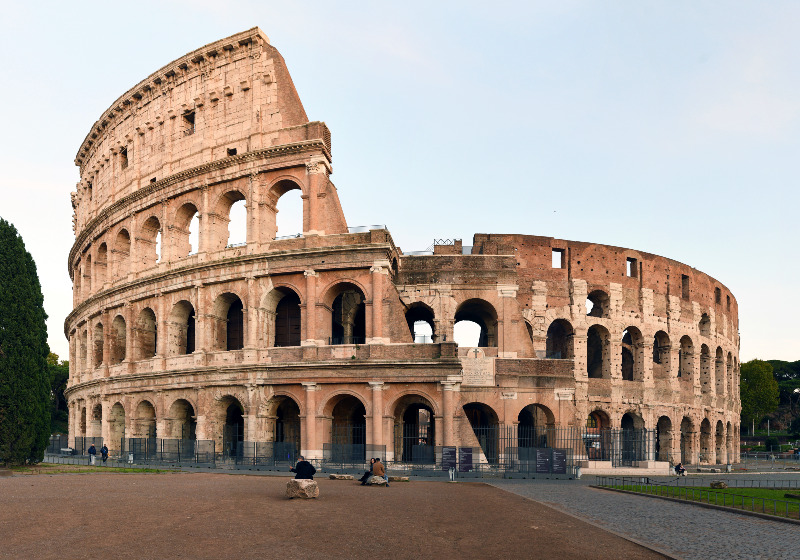
by Amalia Fung-Jenikins, age 12
The Colosseum is one of the most popular tourist attractions in Rome with millions of people visiting each year. Also known as the Flavian Amphitheater, it has a very rich history dating back to the early A.D. 70’s when it was built as a gift to the Roman people.
Following the opening, the Colosseum went through many changes. Ultimately, it reached almost four stories high with measurements of approximately 620 feet by 513 feet. In terms of the design, it had the capacity for 50,000 spectators and there were a total of eighty entrances: 76 for the attendants of the events, two for the event participants, and another two for emperors only. The emperors regularly attended the gladiatorial games held in the Colosseum. During the first opening, the emperor Titus held a 100-day celebration for the gladiatorial games. The emperor Commodus was especially famous for performing in the arena during the games. In addition to the games, the Colosseum also held dramas, reenactments and public executions.
Eventually the Roman people lost interest in the games. After a number of earthquakes, the condition of the Colosseum began to disintegrate around the fall of the Western Roman Empire in the fifth century A.D. With almost two-thirds of the structure destroyed by the 20th century, restoration of the building began in the 1990’s.
[read more]
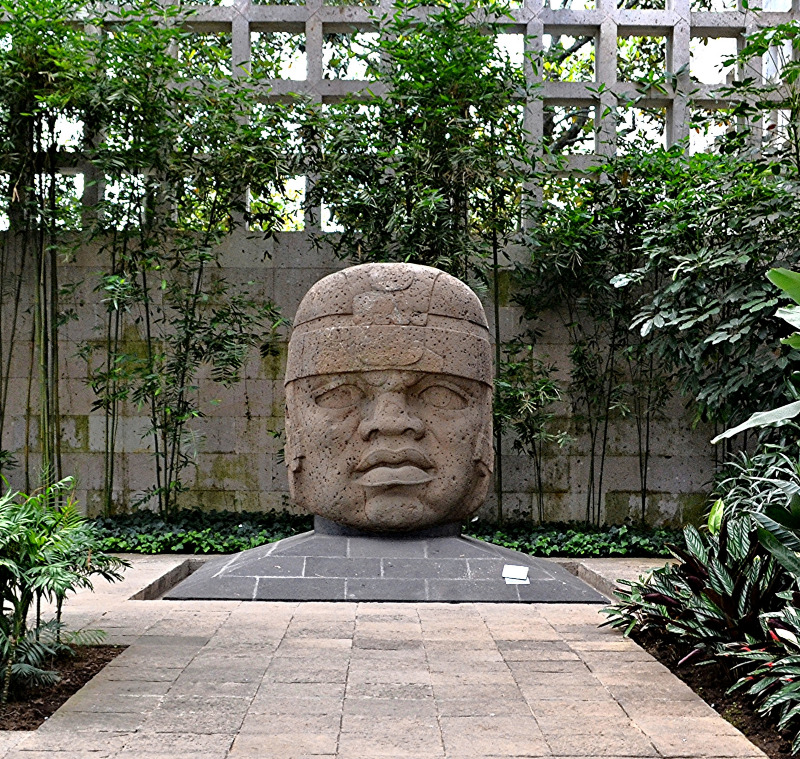
by Jessica Lopez, age 11
The Olmec Civilization is an archeological culture in Southern Mexico that thrived between 1200-500 C.E. This means it is understood through artifacts left behind, especially huge head statues, rather than by written history.
Olmec is not the civilization’s real name. The name comes from the Aztec word 'Olmecatl,' meaning “inhabitant of the rubber country,” indicating there was a lot of rubber production in the same area where other artifacts were found. The name Olmec was coined by archaeologists studying the civilization.
There were two main primary Olmec cities, both close to the Gulf Coast: San Lorenzo, Veracruz and La Venta, Tabasco.
[read more]
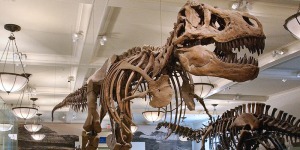
by Felix Berkelman, age 13
As you probably know, the tyrannosaurus was a large carnivorous dinosaur that lived in the Cretaceous period. This period ended approximately 65 million years ago. The tyrannosaurus is what comes to mind for many when they think of dinosaurs. It is easily one of the most well known, and iconic dinosaurs.
Although there were larger carnivorous dinosaurs, the tyrannosaurus was one-of-a-kind when it was found. Before its discovery, the only known dinosaurs were less menacing herbivores. When the tyrannosaurus skeleton was discovered, it was very different from the other dinosaurs. For example, it stood on two legs and had sharp teeth, while other known dinosaurs stood on four legs, and had flatter teeth. Because of these characteristics, it got a lot of publicity, which led it to become as well known as it is today.
One strange feature of the tyrannosaurus was its tiny arms. Scientists used to believe they were just an evolutionary defect, left behind by its four-legged ancestors, but new research suggests that they might have actually had some use. In very young tyrannosaurus skeletons, the arms were much bigger in proportion to the body, and signs indicate that they may have been very muscular.
[read more]
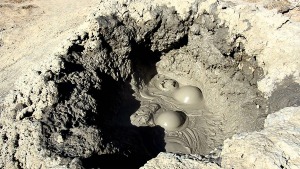
by Felicea Minor, age 14
Sixty years ago, a muddy spring from the San Andreas fault in southern California began to form, moving slowly across the land; 10 years ago it began to pick up speed.
This muddy spring, also known as the Niland Geyser, first appeared in the 1950s. For decades, the spring laid dormant. But just ten years ago, the muddy spring began its slow movement, taking several months to move just 60 feet. Now, since it is moving faster, it can move the same distance in a single day. In a decade, the pit has moved 240 feet and its speed is only increasing.
The Niland Geyser can be very dangerous. It emits foul odors and eighty degrees Fahrenheit bubbles, made out of carbon dioxide and formed from the depths of the Earth, emerge from the springs. If anyone were to fall into these springs, they would die within minutes due to the lack of oxygen.
[read more]
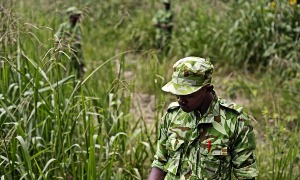
by Sarah Thomson, age 13
Park rangers are a key part of African conservation sites. These sites are essential to protecting endangered species from poaching, also known as illegal hunting. Why, then, are they not being properly supported? It has been shown that with proper equipment and training, rangers do their jobs better. Park rangers need equipment, training, and security to succeed and be safe on the job.
Park rangers and their families simply are not getting the support they need. When the World Wildlife Fund surveyed 12 African countries, 42 percent of rangers had not received proper training for situations with poachers or animals. 59 percent did not have the basic supplies needed to properly do their jobs. Plus, only around half of the rangers had health and life insurance to help them if something were to happen during work. With such little support, rangers aren't doing their best.
This support takes funding, and not enough money is being supplied. Conservation organizations often invest in big technological solutions but fail to pay attention to basic needs. There are a few smaller organizations supporting rangers, but the money they supply is not enough for all of the rangers in Africa.
[read more]
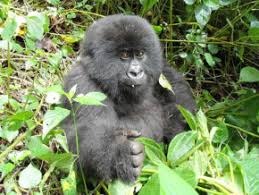
by Armani Stovall, age 11
Vilavu is a young female mountain gorilla that lives in Virunga National Park in the Democratic Republic of the Congo, an African country. In this National Park, the mountain gorillas live in separate family groups called troops. Almost all gorillas love to play, but each troop has their own set of rules to follow.
Vilavu is a part of the Mapuwa troop. The Mapuwa troop includes 22 males, females, and children who eat, play, and travel through the forest together. There are many troops, but they don't often mix. Vilavu, now 6 years old, has begun learning the Mapuwa troop rules.
Young mountain gorillas, such as Vilavu and her cousins, learn the rules by observing adult mountain gorillas. One rule of the Mapuwa troop is that the children must wait until everyone else eats before they can eat. The male troop leader, the silverback, eats first. After he eats, the other adult gorillas eat, followed by the children. Vilavu also learns to build a sleeping nest out of the materials she finds in the forest.
[read more]
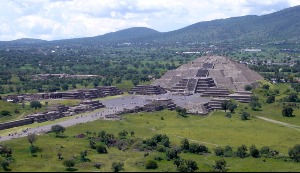
by Leilani McNeal, age 13
In AD 500, Teotihuacán was the largest and most sophisticated city in Mesoamerica. Today, it is a famous visitation site and remains one of the greatest wonders of the world.
Teotihuacán is an Aztec term for “Place of the Gods” and according to local legend, the sun and the moon were born there. The native people built religious monuments, artisan quarters, and private houses. But the Teotihuacáns were most known for their pyramids and temples. Archaeologists gained information on the city’s structure by carefully analyzing the ancient engravings and statues.
Teotihuacán was highly complex, with a specific grid system that precisely diverted a river into a channel in order to avoid complications with the parallel streets. The city’s main axis ran north-south, creating a large street called the Street of the Dead, which ran through the center of the city.
[read more]
The Sugar River runs throughout southern Wisconsin and ultimately feeds into the Rock River in Illinois. The start of its main branch is located in Mount Horeb in Dane County, close to Madison, Fitchburg, and Verona.
[read more...]
Can you imagine diving in a lake and finding a shipwreck? It’s estimated that there are 6,000 shipwrecks in the bottom of the great lakes. Bernie Hellstrom, a diver, was one who found two ships – Peshtigo and St. Andrews – in the depths of Lake Michigan. Both of these ships collided more than 140 years ago.
[read more...]
El río Sugar, también conocido como la cuenca superior del río Sugar, está ubicado en el condado de Dane y fluye hasta el río Rock.
[read more...]
The Colosseum is one of the most popular tourist attractions in Rome with millions of people visiting each year. Also known as the Flavian Amphitheater, it has a very rich history dating back to the early A.D. 70’s when it was built as a gift to the Roman people.
[read more...]
Do you believe that UFOs are real? Have you ever heard of people seeing UFOs near Area 51? Do you wonder what could exist at this location?
[read more...]
The Olmec Civilization is an archeological culture in Southern Mexico that thrived between 1200-500 C.E. This means it is understood through artifacts left behind, especially huge head statues, rather than by written history.
[read more...]
The Silk Road stretched across Europe and Asia, and traders carried goods back and forth along its routes. Silk was often bought from China to dress European royalty and any patrons who had enough money to afford it. Jades, other precious jewels, porcelain, tea, and spices also were exchanged from Asia. From Europe came horses, textiles, and manufactured goods.
[read more...]
As you probably know, the tyrannosaurus was a large carnivorous dinosaur that lived in the Cretaceous period. This period ended approximately 65 million years ago. The tyrannosaurus is what comes to mind for many when they think of dinosaurs. It is easily one of the most well known, and iconic dinosaurs.
[read more...]
Sixty years ago, a muddy spring from the San Andreas fault in southern California began to form, moving slowly across the land; 10 years ago it began to pick up speed.
[read more...]
Park rangers are a key part of African conservation sites. These sites are essential to protecting endangered species from poaching, also known as illegal hunting. Why, then, are they not being properly supported? It has been shown that with proper equipment and training, rangers do their jobs better. Park rangers need equipment, training, and security to succeed and be safe on the job.
[read more...]
Vilavu is a young female mountain gorilla that lives in Virunga National Park in the Democratic Republic of the Congo, an African country. In this National Park, the mountain gorillas live in separate family groups called troops. Almost all gorillas love to play, but each troop has their own set of rules to follow.
[read more...]
In AD 500, Teotihuacán was the largest and most sophisticated city in Mesoamerica. Today, it is a famous visitation site and remains one of the greatest wonders of the world.
[read more...]
Have you ever heard of the Iguanodon, one of the first dinosaurs ever discovered, that roamed the land during prehistoric times? Well, if you want to learn more about this great herbivore, read on.
[read more...]
Recently, a huge prehistoric Mayan city was uncovered using a revolutionary technology called LiDAR. This discovery may change the way that archeologists look at ancient Mayan civilization. LiDAR is a tool that can help archeologists map out areas and discover previously unnoticed ruins or structures; it helped a team of Mayan civilization experts uncover a huge Mayan city.
[read more...]
Poland had been defending its freedom from foreign aggressors for hundreds of years; it is a country with a long and rich history.
[read more...]
There's only one place that can be called the epicenter of our democracy; that place is Washington D.C, also known as the District of Columbia. This is where America’s federal government operates.
[read more...]
The early American West was expanded and built up by settlers and pioneers. In 1776, the United States became independent, which attracted people from Europe. These people, who then moved to the American frontier, were called “settlers.” Most settlers made their homes in the eastern half of what is now the U.S. It wasn't until 1803, after the US. purchased territory from France, that many settlers traveled West.
[read more...]
Oceans hold many hidden mysteries of our planet. Deep among this waters are rich ecosystems that often go unnoticed and underappreciated by humans.
[read more...]
Beginning in 1870 and ending in 1910, large groups of African Americans moved from the southern United States to the North. This mass movement was called the ''Great Migration.''
[read more...]
Did you know that 90 percent of the people who live in Thailand are Buddhist and about three million people there are Muslims? The lifestyle in Thailand is probably very different than yours.
[read more...]
There are many fascinating animals living in Africa, but the most interesting to me are giraffes and elephants.
[read more...]
Eurasian Woodcocks are great, wondrous creatures with many interesting quirks and features. But the real question is, can you find them?
[read more...]
African elephants are massive, majestic creatures; unfortunately, however, they are also endangered. African elephants are getting shot and killed every day for their ivory in their tusks. Ivory is sold all around the world as a luxury item. Elephants are also hunted for their meat and skin, both of which can be used for fashion purposes.
[read more...]
For some, Jamaican coffee is a staple. Whether it helps you wake up at the crack of dawn or it complements your afternoon doughnut, the world seems to run on coffee. Unfortunately, Jamaican coffee has been in decline for years. But there just might be hope for Jamaican coffee farmers and lovers, in the surprising form of birds.
[read more...]
Africa is one of the largest continents, the second largest behind Asia, and covers about one fifth of Earth's land area. This continent is unique, varied, and fascinating to learn about.
[read more...]
Deep in the Atlantic Ocean live the spotted dolphins. Their tails and fins help them swim fast so they can capture their prey. Some may think these speedy creatures are fish, but they are actually mammals.
[read more...]
The Colosseum is an ancient stadium in the city of Rome. It was perhaps ingeniously designed as both a place of entertainment and an arena of death.
[read more...]
The Eiffel is one of the most fascinating and famous towers in the world. French engineer Gustave Eiffel and his company designed the Parisian tower, the construction of which began in 1887. The tower was ultimately completed by 1889.
[read more...]
There are many amazing animals that live in the desert. They all have unique adaptations that allow them to withstand the desert heat.
[read more...]
Pearls are captivating objects. Though they are widely used for jewelry and decoration, some may not know how they are made or where they come from.
[read more...]
The Arctic is not a place many humans would call home, however, but it's just that for some birds. Though most birds live in warm climates and migrate elsewhere when it gets cold, Arctic birds stick it out through each freezing winter.
Arctic birds live in the treeless tundra.
[read more...]
Ancient Egypt was a monumental civilization that is still admired to this day. This nation's history reveals a fascinating progression from small settlement to country.
People first settled in Egypt because of the Nile River. The Nile provided many things necessary for a settlement, such as food sources from the fish and the animals that came to drink here; water from the river itself; fertile silt for farming; and building materials from vegetation growing in its nearby areas. People also settled in Egypt because of its surroundings: the sand dunes, hot weather, and rough climate made it difficult to invade Egypt, therefore making it a safe place to live.
[read more...]
Teotihuacan, an Aztec name meaning ''place of gods,'' was the biggest city in Mesoamerica, South America. It covered an area of more than eight square miles. Big streets, religious buildings, and private houses were part of what made this civilization so sophisticated.
[read more...]
Visualize a thumbtack without the bottom. Now imagine that as a building, but way taller.
[read more...]
Recently, scientists discovered a prehistoric crocodile in the Tunisian desert. They named it the “Machimosaurus Rex.”
[read more...]
Egyptian mummies are the stuff of legends, cryptic video games and adventure films. But why did the Egyptians make mummies in first place?
[read more...]
Japan is an archipelago of islands found off the Eastern side of Russia. The country places 18th in total land area in the world. Its largest island is called Honshu, second largest is Hokkaido, then Kyushu and Shikoku are runner-ups before the smallest of them all, the Ryukyu islands.
[read more...]
America owes its riches to African slaves. The institution of slavery started during the 17th and 18th centuries in the United States. The country had plenty of natural resources, but it did not have enough labor to farm the land. To the rich white plantation owners, African slaves seemed to be a perfect solution.
[read more...]
Marianne Winkler was walking on a German beach with her husband when she saw an object that had washed up on the shore. She investigated further to find the object was a message in a bottle.
The bottle was sealed shut, so Winkler and her husband decided to break it to get the message
[read more...]
The longest river in the world, the Nile flows in many countries. Every year, the Nile rises from July to October despite the fact that it hardly rains in Egypt. This is known as “the riddle of the Nile river.”
[read more...]
Siberian Tigers, also known as Panthera Tigris Altica, are the biggest of the big cats. These creatures are among the most ferocious predators in the animal kingdom. They live in north-eastern China and North and South Korea. Like the closely related Snow leopard, Unicia unicia, Siberian Tigers thrive in extremely cold weather.
[read more...]
Giraffes are like snowflakes – no two look alike. But giraffes share characteristics; they have huge hearts and tongues, to they only give birth to one calf and their “vulnerable” status.
On average, giraffes tend to live 20-25 years. Like any other mammal, they have vertebrae.
[read more...]
Japan has more than 500 volcanoes on its main islands; many lie dormant but others remain active. There are also hundreds of areas of thermal activity throughout this nation. One of the biggest thermal areas in the world is Beppu.
[read more...]
Many people do not realize how valuable water is until it's gone. Worldwide, droughts affect over 1.5 billion people in the developing world. California, one place currently affected by severe droughts, is working on a project that will improve water supply and hopefully get rid of some of its recently mandated water laws.
[read more...]
Flamingos are usually known for their beautiful pink plumage. One flamingo, however, gained fame early this year for its rare black feathers. Spotted among pink and white flamingos, onlookers first noticed the unusual black flamingo at the Akrotiri Environmental Center on the Mediterranean island nation of Cyprus this April.
[read more...]
Every year thousands of helpless animals are illegally hunted, bringing them one step closer to extinction by poachers. But with new technology, these crimes can be stopped. The animal's potential savior—drones.
[read more...]
I recently read
The Breadwinner
by Deborah Ellis. This book is about a resilient girl who overcomes many obstacles in Afghanistan.
[read more...]
In the year 1900, pieces of an ancient device that would come to be known as the Antikythera mechanism were discovered under the sea by sponge divers and taken to the National Archaeological Museum in Athens, Greece.
[read more...]
The northern lynx is a complex creature. It manages not only to survive in extremely cold weather, but also to live a fairly long life.
[read more...]
The very first horses originated in North America almost two million years ago. However, the species almost disappeared from the New World around 10,000 B.C.E. Researches believe that people who migrated from Eurasia to North America around this time and hunted and captured horses are to blame for their near-extinction.
[read more...]
South America, the fourth biggest continent, contains about 12 percent of the Earth’s land area. Populated by over 355 million people, this continent is unique and filled with incredible biodiversity.
[read more...]
It is well known that kangaroos carry their young in their pouches, but did you know they are not the only animals to do so? In fact, all marsupials carry their young in pouches.
[read more...]
Imagine running through a great river valley. You're living a happy life and have much to eat. All of a sudden, mud buries you and everyone around you. Millions of years later, your bones are discovered by a group of scientists who then embark on a journey to figure out exactly what happened to you and your species.
[read more...]
Crunch! This is sound made when an African elephant chews its food. African elephants chow down between 400 and 600 pounds of plants and other greens a day. In order to break down this extreme amount of food, their teeth must be crunching all the time.
[read more...]
With unique teeth structure to hunting patterns, foxes roam all over the world.
[read more...]
Mexico went through a lot of complications in order to become a complete nation.
[read more...]
The 3,000 foot tall “Nose” is located on Yosemite National Park's granite massive structure, “El Capitan.” Many people had tried to climb it, but nobody succeeded until athlete Lynn Hill. Hill was the first climber to conquer the Nose.
[read more...]
Water is an important factor in cave formation. It finds its way through cracks, dissolves, and melts, creating caves all over the world.
[read more...]
Almost 150 years ago a group of 250 men built the 1,000-foot-tall Eiffel Tower in only 26 months. Gustave Eiffel, French engineer, submitted his plans for what would be the tallest structure in the world at that time, along with 100 other architects in a contest. In 1886 his company was selected to build his structure in time for the 1889 Paris Exposition. Eiffel was not only known for building sturdy railroad bridges but also had a reputation for solving technically challenging problems.
[read more...]
Many foods that we eat today were first grown in the Fertile Crescent around about 8,000 B.C.E when the practice of farming began.
[read more...]
It may be hard to believe that 71 percent of the Earth's surface is made up of oceans, seas, and other bodies of water. With this much water covering the Earth's surface, its not surprising that scientists are still unsure of what these waters hold.
[read more...]
The Danube Delta, a vast area of waterways, marshes, and lakes, has suffered extensive damage due to pollution. The root of this pollution is agricultural run-off, which has led to the decline of native species.
[read more...]
Throughout history, researchers have discovered information about our ancient ancestors. The finding of one baby homo neanderthalensis fossil sparked many of these findings.
[read more...]
In the Black Hills of South Dakota, there is a curious looking mountain.
[read more...]
The city of Petra is located in the Middle Eastern country of Jordan. Before the first temples and tombs were built in 300 B.C. E. thick layers of rock surrounded the area. The city is the namesake of this rocky terrain, petra meaning rock.
[read more...]
Imagine standing at the foot of a huge Chichén Itzá pyramid in Mexico, as I did recently during a family trip. I took in the enormity of the pyramid and its vast desert-like surroundings. I felt speechless at the thought that many years ago the place where I was standing was the heart of the Mayan civilization. The Mayan civilization flourished for more than seven hundred years.
[read more...]
|
|

